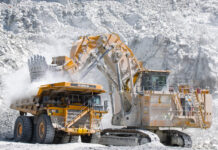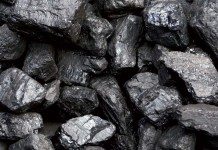
THUNGELA Resources is hoping to increase production from a mine it bought in Australia last year by as much as a quarter. If it achieves this stretch target, the JSE-listed coal miner will offset a possible decline in South African production.
Thungela CEO July Ndlovu tells the FM that the firm’s Ensham mine in Queensland could be pushed to 4Mt this year, which compares with production guidance of about 3.2Mt. Thungela could do with the boost.
In the six months ended June, two derailments on the Mpumalanga to Richards Bay line, operated by Transnet, cost the company 650,000 tons in exports. Ndlovu describes it as “a bitter disappointment”. To quantify it, the derailments represent an opportunity cost of R55m.
“The problem was with signalling. Basically there were two collisions because Transnet doesn’t always know where its trains are [on the line],” says Ndlovu. While there’s been some promising industry murmurs about the improved intent and purpose of Transnet’s new management, led by CEO Michelle Phillips, Ndlovu doesn’t see it translated into higher mineral volumes. “As I said earlier this year, we won’t see an improvement from TFR [Transnet Freight Rail] until 2025.”
Coal stocks at Thungela’s South African mines are expected to increase by one million tons this year as a result. The lack of rail capacity also affects Thungela’s ability to respond to market demands, limiting its flexibility on product mix. The company reported an increase in its discount to the price benchmark ex-Richards Bay of 15% in the six-month period, compared with 14% previously.
Increased production from Ensham, which will require meaningful mining plan changes, will also offset a weaker coal market. On average, international and South African export prices have fallen by 25% and 18% this year. Half-year earnings will be 55%to 69% lower year-on-year as a result.
Despite this, there are grounds for optimism for the second half of Thungela’s financial year; the coal market is more volatile, which makes it just as likely prices will surprise on the upside.
Why is this? The invasion of Ukraine in 2022 resulted in coal prices quadrupling soon after Thungela listed. While prices are edging back to S&P Global Ratings’ 10-year metal price mean of about $80 to $85 a ton, the market is almost permanently in a state of energy crisis. Markets are skittish.
Another pulse in prices could be but a minor geopolitical scuffle away. “It’s impossible to say whether there’s going to be another event, but I would say that small things have big effects these days,” says Ndlovu.
M&A ambition
As a single-commodity company, a so-called ‘pure play’, Thungela runs a R5bn cash buffer on its balance sheet to guard against market volatility. It’s what shareholders prefer, says Ndlovu, who claims not to have been “too surprised” when a resolution proposing to give the board authority to issue shares was voted down at the AGM in May. “It wouldn’t affect our ability to do M&A [mergers & acquisitions] but the message we receive all the time is that as a pure play, the preference is that we give cash back to shareholders,” he says.
In any event, Thungela shares the concern about dealmaking in today’s market. When it bought Ensham for A$335m last year, the market thought differently about coal. As Rio Tinto and BHP had already quit their thermal coal investments, mineral reserves didn’t command the premium of today. With the Ukraine invasion, that’s changed somewhat and the world sees energy security differently.
This is good news for Thungela’s medium- to long-term prospects.
M&A is becoming more difficult, especially as investors are less desirous of it, but that only serves to highlight the value of Ensham’s expansion potential. “It’s a massive resource,” says Ndlovu. “We just have to find out what is optimal in terms of production. Is it 5Mt or 10Mt a year? We will know by the end of the year.”
A version of this article first appeared in the Financial Mail.











